| INDEX
Home
Weapons
Photo Galleries
News
Humor
Pages
New
Stuff
Contact Me
|
Mars Rover Opportunity Captures Some Mysterious
Images
February 5, 2004
Analysis courtesy of Linda Moulton
Howe |
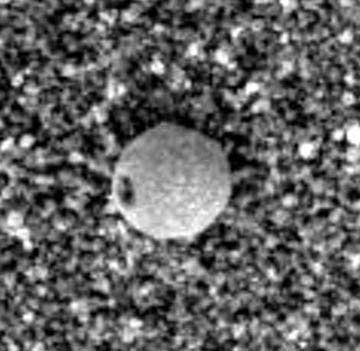 |
This image is from the Opportunity microscopic imager released February 4, 2004. One of at least two similar objects in the original photo, they seem to be spherical with a spot or hole in their side. The image is cropped and zoomed but otherwise untouched photo. Looks organic, sort of like diatoms, but may be mineral or dust grains? |
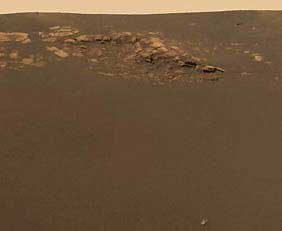 |
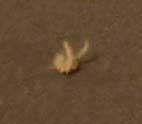 |
Enlargement of the unidentified 2-pronged feature in Opportunity panoramic image shown left. Image enlarged by Paul Anderson.
|
|
Left: A portion of the color image by Opportunity's panoramic camera which includes the light-colored bedrock and unidentified 2-pronged feature in the lower right corner. This shallow hematite-rich Meridiani Planum crater is where the spacecraft came to rest when it landed on Mars on January 25, 2004.
Image credit: NASA/JPL/Cornell.
The zoomed image (left), at Opportunity, is an odd little something first noticed in four of the raw images taken of the nearby soil on Sol 2, a small object which looks almost like a tiny plant with two upward-pointing 'stalks' or else some kind of debris from the lander itself. It is also better seen in the new color panorama just released on February
2. |
|
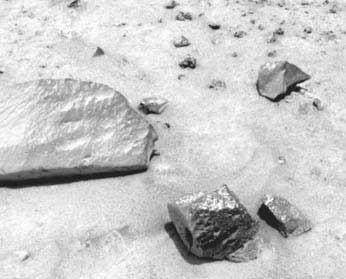 |
"Sushi" Rocks
An image from Spirit of the rock nick-named "Sushi" by NASA/JPL. It was to have been one of the first targets for the rover, but then determined to be too rough for grinding. The rock itself appears very interesting however, with the sort of rectangular looking "hole" in it's flattest face (left side of rock), clearly seen in the images. Geoligists say this could be the hole left by a dissolved crystal, such as glendonite. It hasn't been examined more closely yet (before the software problems), or at least it has not been commented on by JPL. To interested geologists, it would seem this particular rock could potentially be more interesting geologically to study further and get better images or to remotely test samples.
|
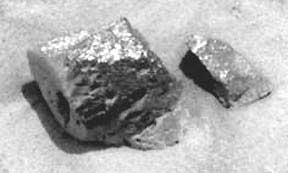 |
Left: foreground squarish rock that NASA has dubbed "Sushi"
has on its left face an unidentified dark "square."
Image credit:
NASA/JPL/Cornell.
|
|
|